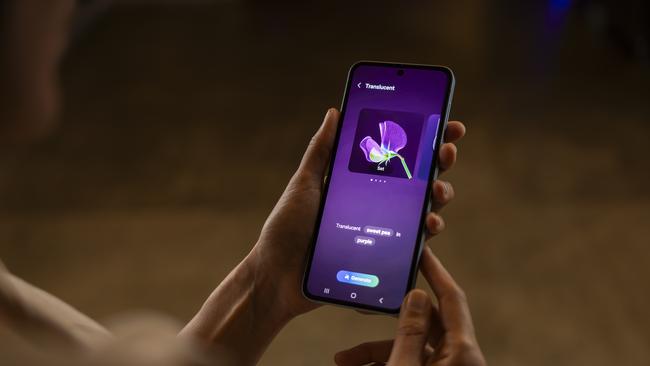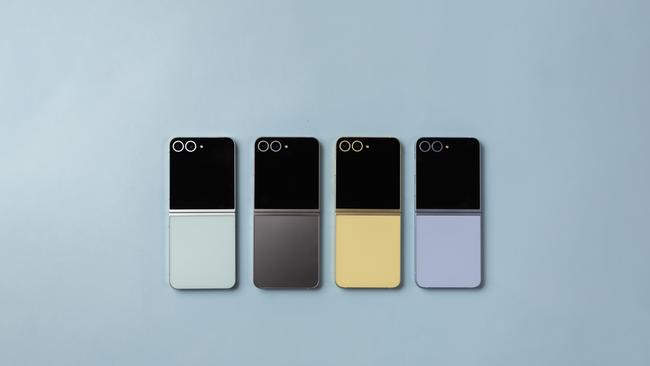The reality of switching from an iPhone to android
Samsung says it’s never been easier to switch from an iPhone to one of its android devices. But was it enough to pull me away from Apple after 14 years?
Samsung says its new flip and foldable phones are the most durable they’ve produced and packed with a suite of artificial intelligence-powered features. But was it enough to pull me away from Apple after 14 years?
Spoiler alert, I’m keeping my iPhone. It’s not because the Samsung phones are bad. They are impressive, well-built machines which also make it easier to get creative with generative AI.
It’s more a matter of economics.
Once you’re in a certain brand’s ecosystem, it’s expensive to leave. It’s the same dilemma photographers face. By the time they buy a certain camera brand and compatible lenses, switching ends up being costly.
And with a smartphone, I didn’t realise how much of a problem this would be.
This is what I discovered:

Optimistic beginnings
I sat down for a chat with Samsung’s Australian head of mobile experience Eric Chou. He tells me it’s easy to switch from Apple’s iOS, thanks to Samsung’s app called Smart Switch.
This allows for messages and other content on an iPhone to be transferred to the android device.
“In addition to that, it also then looks at what kind of applications that have already been used on your device, and then actually moves that across as well. So from a switching barrier perspective, it is quite minimal,” Chou tells me.
He also says up to 25 per cent of customers on the Galaxy Z Flip5 — which the new 6 has replaced — have come from iOS.
The reality
When the Galaxy Z Flip6 — which is priced from $1799 — arrived at my desk, I booted it up and followed the simple prompts to set up the phone and transfer from iOS.
Smart Switch allows you to do this in three ways. You transfer data from one phone to another via a USB-C cable, wirelessly or by allowing Samsung to access your Apple account to download everything from iCloud, image library and all.
I was keen to use the cable. But, the transfer kept breaking down. I then tried the wireless option, and the same thing happened.
I was reluctant to sign in with my Apple ID — think of the celebrity photo breaches from a decade ago. But, this was the only workable option, for me, to migrate from iOS to Samsung’s ecosystem.

The phone
The Galaxy Z Flip 6 is nice piece of kit, particularly if you carry your phone in your pocket rather than a bag. Bear in mind, it’s not dust resistant, so I wouldn’t put it in my back pocket while gardening during a Melbourne winter. But, it allows users to have the benefits of a 6.7-inch display in a package which collapses to half that size, thanks to its clamshell design.
Chou tells me they have also made the hinges more durable. I do notice a concave impression which runs along the hinge line when the phone is flipped open.
The AMOLED display is bright at 2600 nits, compared with 1750 nits on the Flip 5 and 2000 nits peak brightness (outdoor) on the iPhone 15.
Usability
The best feature of iPhone is how intuitive it is. It can all be controlled via a few simple swipes and taps. The Flip 6 has three virtual buttons at the bottom of the screen. Using these can be clunky at first, and takes some rewiring of your brain, but it all depends on what you’re used to.
The gadgetry



This can entice many people to switch. Samsung has been launching an array of AI-powered features to enhance creativity. This includes turning crummy sketches into artwork (I was surprised it was able to generate a photorealistic image of my dog from my basic drawing). It even offered options of various piebald dachshunds, even though I didn’t draw any coat patterns. AI-generated images are all watermarked.
You can also move images around in pictures — but, I found this had mixed results. Sometimes the AI hallucinated. When it was meant to fill in the background it came up with entirely new objects, like a wooden box. But, this is all first-generation tech and is the worst it will get.
Other AI features include using the flip’s external screen to provide a real-time translation when you’re speaking to someone in a different language, creating your own subtitles. It supports 23 different languages and is a nifty travel companion.
Connected devices
This is where changing ecosystems can get expensive. While Apple Music is available on android, I couldn’t download the app on the Samsung Galaxy Watch Ultra (which retails from $1299).
You can use Spotify, but, unless you pay for the premium version, you have to listen to ads or music similar to the album you searched for, which is annoying.
Android phones also don’t support Apple Watches, and iOS did not support the Galaxy Watch Ultra, meaning if you switch phones, you also have to switch wearables, which is another unnecessary — and expensive — cost.
This is why I suspect sometimes you see Samsung giving their watches away with their phones. It overcomes another hurdle for switching.
So, why switch?
Samsung offers more design choices. You can have the clamshell flip, the bigger tablet-like foldable version or the more iPhone like s21. Whereas, an iPhone is an iPhone coming in different sizes, materials and cameras.
The main question is whether more design choices are worth rewiring your brain and draining your wallet.





